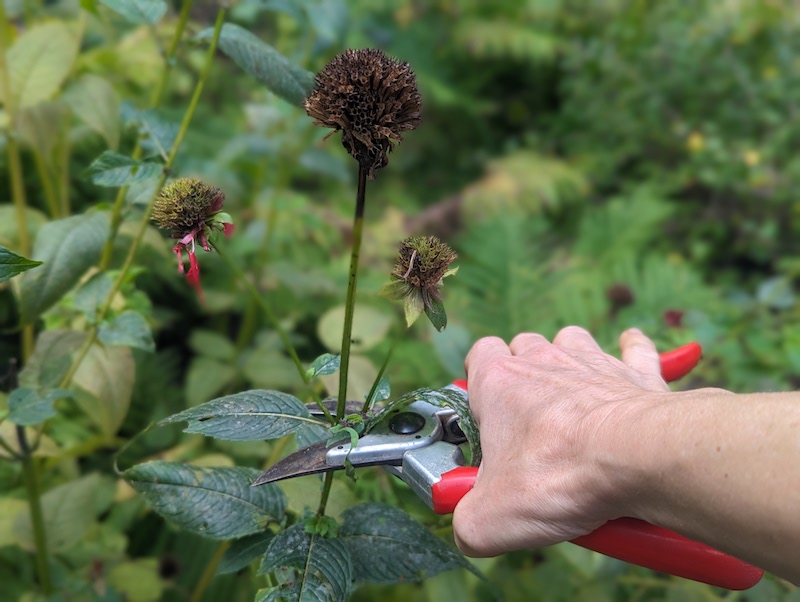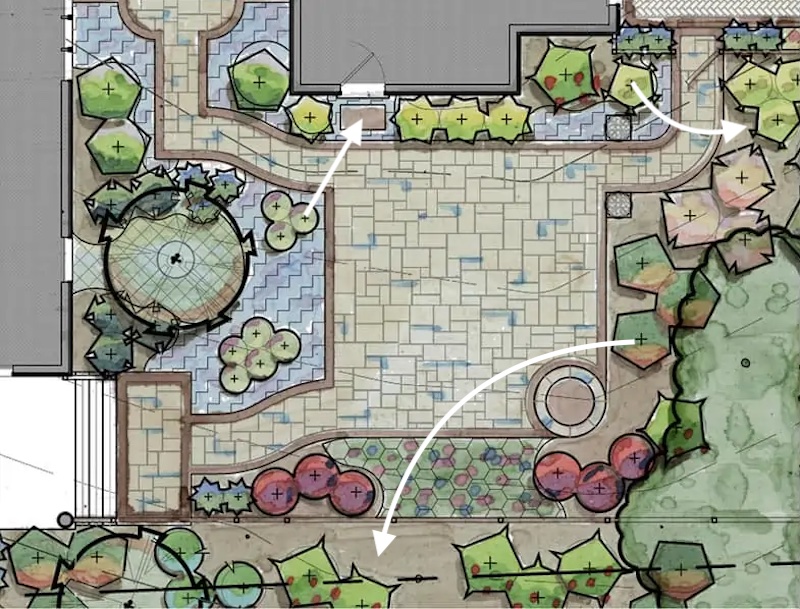September is a great time to work outside when the weather is cool and the garden is winding down. Some of the key jobs at this time are fall cleanup, plant rearranging, mulching, and preserving bulbs and tender perennials.
What to Cut Back
Fall cleanup can vary depending on your gardening personality and climate. For those who like a tidy-looking garden, fall is usually a time for cutting back spent blooms and putting the garden to bed. Bee balm, phlox, shasta daisy, peonies, and speedwell can be cut back as these plants start to fade. Dispose of the clippings to prevent pests and diseases from overwintering and reinfecting your plants in the spring.
Leave the new basal growth on plants like yarrow and globe thistle, but remove the spent top growth. For perennial bulbs like iris and lilies, leave the yellowing foliage in place until it has completely died back. This allows the plant to keep producing and storing energy for as long as possible before winter dormancy.

What Not to Cut Back
Some plants can be left alone until early spring. We like to leave the seed heads of black-eyed Susans, false indigo, sedum, and coneflower because they are interesting even when frozen and brown and provide food for non-migrating birds. Some people elect to cut ornamental grasses back in the fall, but they too can provide winter interest, and the spent top growth helps insulate the crown. For that reason, also refrain from cutting back borderline hardy perennials such as bear's breeches, blue beard, lavender, and red hot poker; the fading foliage will help protect the root crown. Evergreens such as hellebores, coral bells, barrenwort, moss phlox, and euphorbias should also be left alone and will help provide color when little else is happening in the garden.
Mulching
September is also a good time to refresh your mulch. Plants that are borderline hardy or tender will especially benefit from the extra layer of insulation on their roots. Spread a hearty layer of organic material, such as wood chips, pine needles, straw, or compost, around the root zone or drip line of your perennials, shrubs, and trees. Leaf litter is a particularly nutritious mulch to use in your garden, and plentiful if you have a lot of deciduous trees in your backyard. The layer should be 2-3 inches thick and should not touch the trunk or base of the plant to prevent issues with rot.

Editing the Garden Plan
One of my favorite jobs for the fall is reassessing the placement of plants. I like to compile a list of the plants that have outgrown their space and need to be divided or transplanted to a new area. Some plants were sited poorly to begin with and are not getting the right amounts of water, sunlight, nutrients, or other growing parameter. I mull over the list and try to visualize where the plants might be happier and where space is available (a rare commodity in my garden!).
I also consider the overall design and goals for each bed. Am I working toward a certain garden style, and have I adequately highlighted a particular focal point in that bed? Is the bed missing a certain texture, height, or color? You can slowly move through your list, editing your garden and moving those problem plants that have bothered you all season. Don't forget to give your neighbors and friends any extras at the end of your effort!
 |
Author Jessica Mercer - Published 09-20-2023 |
